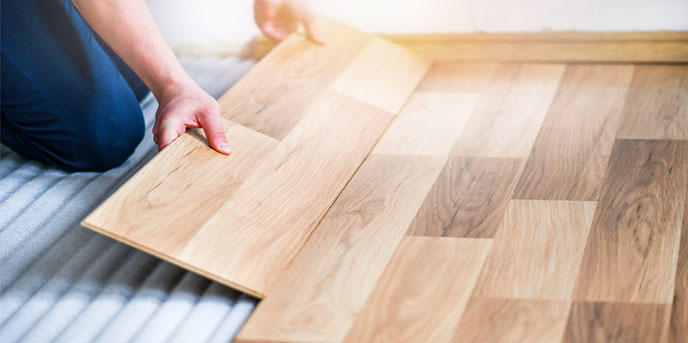
Introduction
Bamboo flooring is a popular and eco-friendly choice for homeowners seeking durability, beauty, and sustainability in their flooring options. However, to fully enjoy the benefits of bamboo flooring, proper installation is essential. In this detailed article, we’ll delve into the world of bamboo flooring installation, providing you with valuable tips and techniques to ensure a seamless and long-lasting result.
The Allure of Bamboo Flooring
Bamboo flooring has gained immense popularity due to its elegance, sustainability, and strength. As a renewable resource, bamboo is a favorite among environmentally-conscious homeowners. However, achieving a stunning bamboo floor starts with the proper installation.
Types of Bamboo Flooring
There are two primary types of bamboo flooring: solid bamboo and engineered bamboo. Solid bamboo consists of bamboo strips compressed together, while engineered bamboo includes a bamboo veneer layer on top of plywood or HDF (High-Density Fiberboard). Understanding the type you have is crucial for installation.
Advantages of Choosing Bamboo
Before delving into installation, it’s important to recognize the advantages of bamboo flooring. These include durability, resistance to moisture, eco-friendliness, and the natural beauty of bamboo’s grain patterns.
Tools and Materials for Installation
To begin your bamboo flooring installation journey, you’ll need an array of tools and materials, including flooring adhesive, nails, a moisture barrier, a moisture meter, a saw, a hammer, a tape measure, and safety equipment like gloves and eye protection.
Preparing Your Space for Bamboo Flooring
Subfloor Preparation
Ensuring a level and clean subfloor is paramount. Remove any existing flooring, repair subfloor imperfections, and ensure it’s dry, flat, and free of debris.
Acclimatization of Bamboo
Allow your bamboo flooring to acclimate to the room’s temperature and humidity for at least 72 hours before installation. This prevents excessive expansion or contraction post-installation.
Installation Techniques for Bamboo Flooring
There are three primary installation methods for bamboo flooring:
Nail-Down Installation
This method involves securing the bamboo planks to the subfloor using nails. It’s suitable for plywood or wooden subfloors.
Glue-Down Installation
In this method, the adhesive is applied directly to the subfloor, and bamboo planks are glued down. This approach is ideal for concrete or plywood subfloors.
Floating Installation
Floating installation involves attaching the bamboo planks together without adhering them to the subfloor. This method is suitable for any subfloor type and is often used for engineered bamboo.
Tips for a Successful Installation
Proper Layout and Measurement
Plan your layout carefully, ensuring the floor’s visual appeal and symmetry. Measure and mark reference lines to maintain straight rows.
Handling Bamboo Planks
Bamboo is prone to dents and scratches, so handle planks with care. Avoid dropping heavy objects, and use furniture protectors to prevent damage.
Maintaining Proper Expansion Gaps
Allow for expansion and contraction by maintaining the recommended gaps around the perimeter of the room and at transitions.
Dealing with Irregularities
Address any irregularities in the subfloor, such as high spots or low spots, before installation to prevent squeaks or unevenness in your bamboo floor.
Ensuring Adequate Ventilation
Proper ventilation is essential, especially for solid bamboo. Ensure adequate airflow by installing vents and leaving expansion gaps along walls.
Finishing Touches
Complete your bamboo flooring installation by adding trims and moldings to provide a polished and seamless look, covering gaps around the edges and transitions.
Maintenance and Care for Bamboo Flooring
To keep your bamboo flooring looking its best, follow a regular maintenance routine, including cleaning, refinishing, and avoiding excess moisture.
Common Installation Mistakes to Avoid
Be aware of common installation mistakes, such as inadequate acclimatization, poor subfloor preparation, and skipping expansion gaps. Avoiding these pitfalls ensures the longevity of your bamboo floor.
Conclusion
In conclusion, bamboo flooring installation is a rewarding endeavor that enhances the aesthetic appeal and functionality of your space. With the right tools, techniques, and attention to detail, you can enjoy the beauty and sustainability of bamboo flooring for years to come. So, embrace the allure of bamboo and transform your living spaces with this eco-friendly and elegant flooring option.
References:
